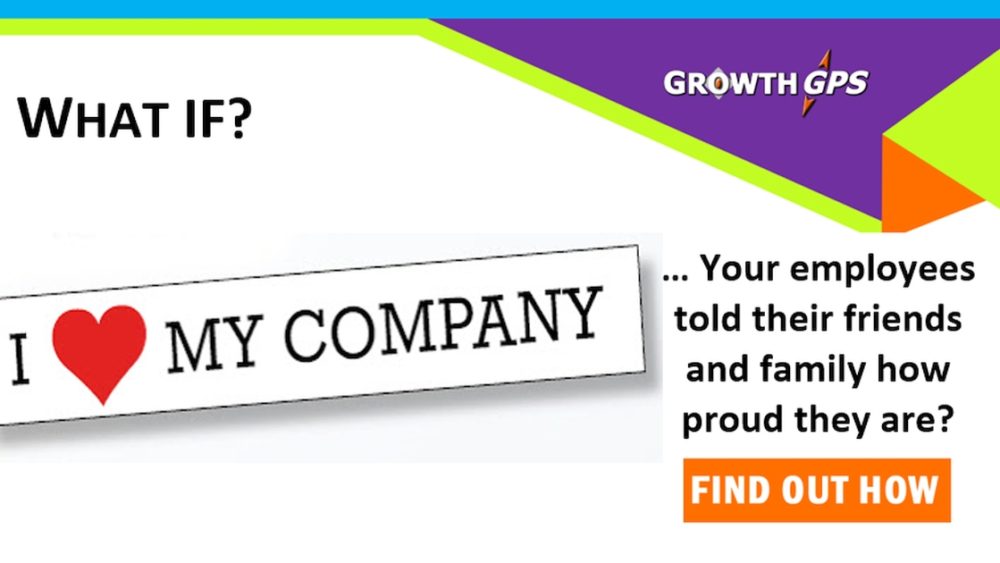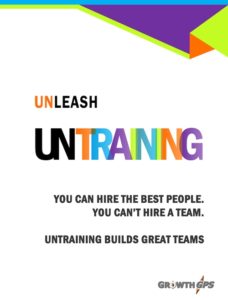What is it about some organizations that employees are so proud of they can’t stop talking about how great of a place it is to work? Pride is the outward expression of employee engagement. The key factors that go into achieving employee pride are at the very core of the services we provide at Growth GPS.
Story Highlights
Employee pride in the workplace is an outcome of 4 closely-aligned critical organizational factors:
- VISION – Employees buy into WHY the company exists and WHERE its going
- CULTURE – Employees embrace HOW to achieve the vision
- MANAGERS – Employees thrive in WHO, WHAT and WHEN to act based on their immediate supervisor supporting the vision and culture direction
- ORG. SYSTEMS – Employees experience harmony across the organization’s systems in support of the vision and culture directions
COMPANY VISION TRIGGERS PRIDE MOMENTS
Every organization is aiming somewhere next, however, a meaningful company vision has greater dimension to it than what many companies describe. Many companies are aiming toward a commercial goal, a number or several numbers deemed significant, like revenue, sales, number of customers, etc.
While goals can be motivating to employees in the right environment, rarely are they embraced by employees as a pride factor – something to brag about to their friends and family. Rarely will you encounter your son or daughter beaming at the Thanksgiving table, “We’re aiming to hit our first $10m.”
A company vision is bigger than a goal, especially a commercial goal, because it’s more holistic with more dimension and meaning. A vision defines WHY your organization exists and WHERE it’s going to make a bigger impact for the WHY.
I find employees get excited about a Why they can believe in, a bigger purpose they can get behind. That’s the first building block of pride, being part of something bigger than we are.
ACTION #1: Senior Leaders – Define the firm’s Why – build an ambitious Vision. FIND OUT HOW
COMPANY CULTURE DEVELOPS PRIDE
While employees can feel proud about their organization’s bigger purpose, they tend not to say a lot about it until 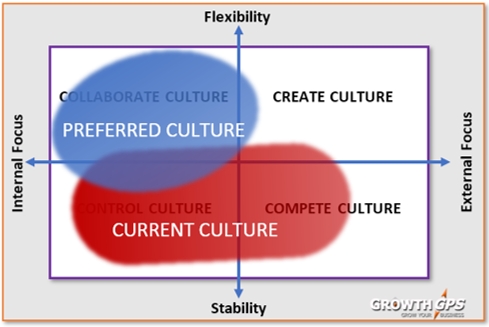 they become active participants in delivering on that purpose. That’s the role of culture.
they become active participants in delivering on that purpose. That’s the role of culture.
Culture defines HOW people are expected to work – creatively, competitively, controlled, or collaboratively.
At the risk of sounding circular, employees get excited about building a workplace they’re excited about. Virtually every employee has ideas for how to improve the workplace, even if they don’t have ideas for better products or processes.
Indeed, a focus on culture engages employees in ways that many other strategies don’t. It’s that simple. Pride grows when employees have a stake in building the workplace they want.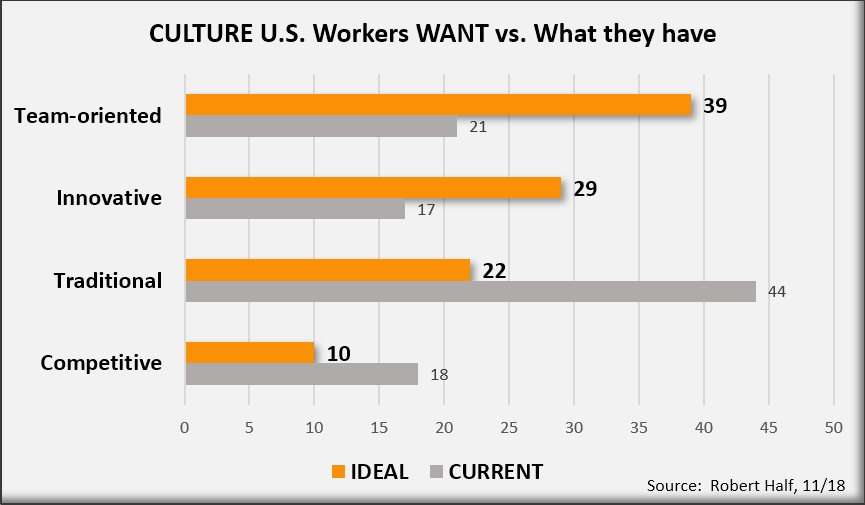
Recognize, today’s employees want a more team-oriented, collaborative workplace culture. Leaders, let go the reigns, employees are motivated to do their best without all the controls you believe necessary. Only half your employees want the traditional culture they have, while twice as many want a team-oriented culture.
Pride grows when employees have a stake in building the workplace they want.
ACTION #2: Senior Leaders – Define an Intentional Culture and live it with your actions. FIND OUT HOW
MANAGERS ENABLE PERSONAL PRIDE
Gallup research indicates 70% of an employees’ satisfaction at work is tied directly to their manager. Pride is greatly magnified when a person’s immediate supervisor or manager supports the culture direction the organization is aiming toward. 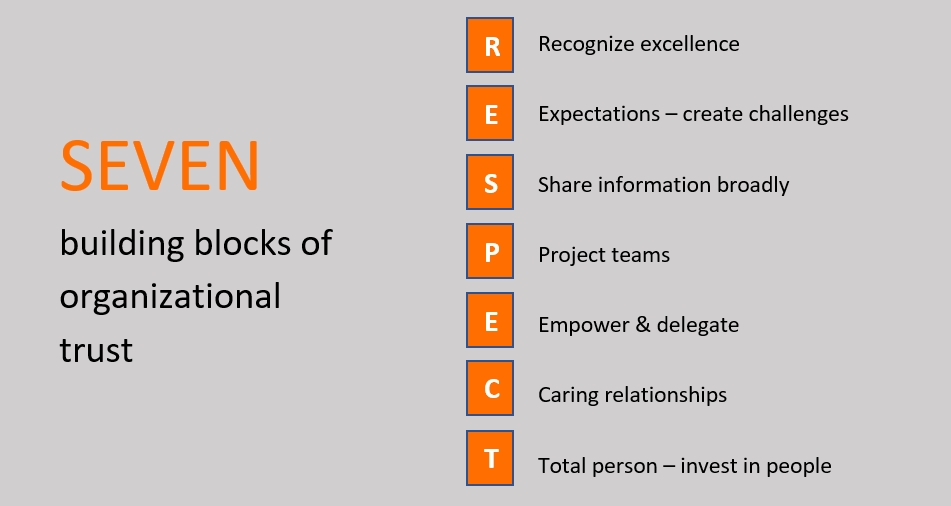
We’ve all worked for people who tell us to do something mis-aligned with where the company is headed. That kind of dissonance destroys trust, loyalty and is a pride buster if ever there was one.
On the other hand, when a manager supports employees who want to do something new, out of the everyday norm, that’s in line with where the company is headed, just the opposite happens. Trust, loyalty and pride go through the roof.
There are always employees who want to be first, try new things and find out whether the change that’s talked 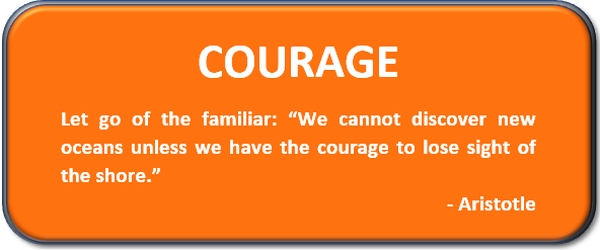 about is for-real or just another program-of-the-month. When these “early adopters” discover their manager not only supports but cheers their new behaviors, activities or whatever it may be, they become the best advocates for internal change.
about is for-real or just another program-of-the-month. When these “early adopters” discover their manager not only supports but cheers their new behaviors, activities or whatever it may be, they become the best advocates for internal change.
ORGANIZATION SYSTEMS EMBRACE PRIDE
Pride in the workplace shoots through the roof when everything employees experience supports the vision, culture 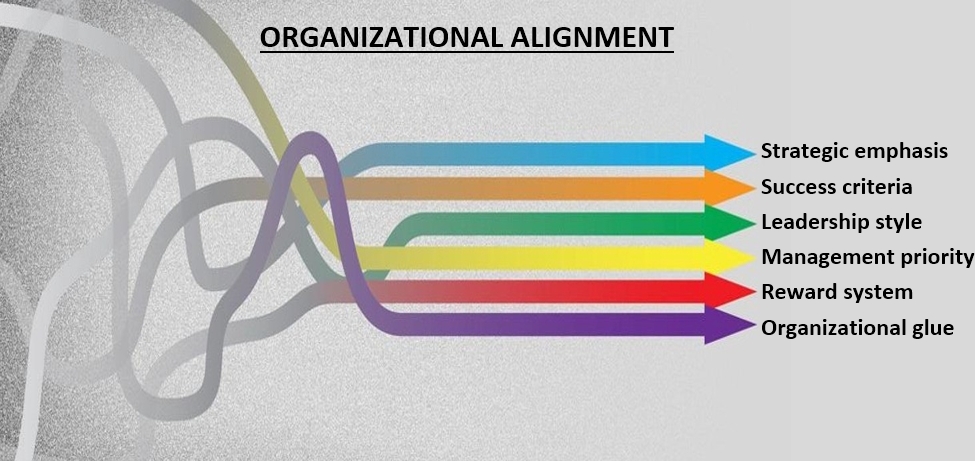 and direction of the firm. When the direction described by senior leadership is supported by a change in actions by senior leaders, managers and supervisors alike. And when systems that directly impact employees reflect the change – be it goals, performance reviews, recognition and rewards, and where they see priorities placed and money invested.
and direction of the firm. When the direction described by senior leadership is supported by a change in actions by senior leaders, managers and supervisors alike. And when systems that directly impact employees reflect the change – be it goals, performance reviews, recognition and rewards, and where they see priorities placed and money invested.
When employees get behind a bigger purpose, and they’re able to contribute to helping the organization achieve it with the right workplace culture, supported by their direct manager, employee engagement skyrockets and pride beams as the most powerful force multiplier.

